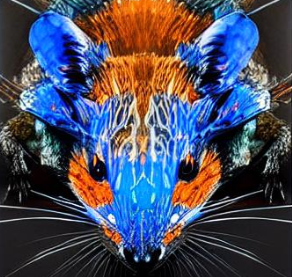It would seem the design that can survive the most extinctions would be the clear winner in the end.
Ultimately, it’s selecting for crabs. Crabs are perfection. There is no escaping carcinization.
There’s a great episode in Eons about convergent evolution and crabs specifically.
I always thought it seemed like mother nature was feeling a little crabby.
There’s isn’t anything doing selecting. A gene mutates and if it stays in the mating cycle enough times to become part of the species as a whole then it’s become “selected”. That includes things that aren’t good for adapting to an environment as well as things that are.
This is the correct answer.
Differential reproductive success does the selecting: https://www.gutenberg.org/files/2009/2009-h/2009-h.htm
This makes me wonder, why are there no 100% albino species considering albinos can be found in every species and can only produce other albino offspring when paired with other albinos?
Aren’t there, in blind cave species where there’s no pressure to select for coloring to protect from the sun or to camouflage or display for mates?
If they can only albino offspring when paired with other albinos that indicates it’s a recessive gene.
Recessive genes don’t take over gene pools unless they confer some survival advantage.
And usually albinos are at a distinct disadvantage. Their camouflage doesn’t work, or their mating colors aren’t present, or they get burned up by the sun, or a hundred other disadvantages depending on the species and environment.
They get eaten
How does being albino automatically mean being eaten (assuming we rule out species that need camouflage)?
First, the vast majority of species depend on camouflage at least somewhat, since there are very few species that are neither predator nor prey. Also, albinism prevents your skin from properly protecting you from the sun. So even then, it is selected against. As other have pointed out though, caves don’t have either of these forces at play—the darkness makes visual camouflage irrelevant and there is no UV light. So there, as you predicted, most species are albino.
Albino is only used as a term when it’s a deviation from the species norm usually. There are all white cave bugs.
I thought albinism had an objective basis in the genetic code.
I’d say adaptability would be priority in an environment that is subject to frequent change. Environments that are largely static probably favor efficiency.
Yeah. Countless examples going both directions. I wouldn’t call crocodilians super adaptable, but they are so well tuned for their specific environs that they’ve been largely unchanged for 94 MILLION years.
I would argue that being warm blooded makes an animal more adaptable. Interestingly, it seems cold blooded reptiles evolved into warm blooded archosaurs which eventually led to cold blooded crocodilians. Tellingly, these active warm blooded ancestors are all extinct in favor of the passive, cold blooded, low adaptability ambush predator.
In the opposite direction, the adaptable rat has done much better than the countless specialized species that have disappeared since the industrial revolution and human explosion.
The thing about coastal areas is they’ll always be a part of Earth’s biosphere. Unlike plains or deserts or deciduous forests, which don’t have to exist, and can completely disappear, coastlines and estuaries can only move, never disappear.
This is a cool point. I’ve never thought about that before. It’s a very stable environment allowing for efficiency to be selected for in ways that may decrease adaptability.
A coastline absolutely can vanish(submerged) or be against geography, such as rocky cliffs, that is unsuitable. “Coastlines can’t stop existing, only move” is semantic nonesense.
EDIT: for ya downvoters, where’s the coastline on an island that vanishes due to rising sea levels? The Marshall Islands have a max elevation of ~7’ and are already having issues with rising sea levels. When the sea rises above them, where does their coastal ecosystem go?
If a coastline submerges a new coastline is created further inland. ie, it moved. Or are you proposing a situation where all land is submerged?
You’re right, a beach can be replaced by cliffs that a crocodile wouldn’t be able to make use of. That’s a good point.
Cold blood probably makes a lot of sense for an aquatic ambush predator that needs to lie motionless for most of its life. Keeping that body warm the whole time wastes a lot of energy, especially under water. If you conserve energy, you can go longer without food which is important if you are waiting for food to come to you rather than seeking it out.
Natural selection selects for what works well enough. In a more rapidly changing environment, adaptability is what often gets selected for. But in the case of species like the kakapo that live in stable, slowly changing environments, it selects for reproductive stability. The kakapo has a fairly intricate, complicated reproductive cycle that requires specific conditions. This effectively results in their population growth being very very flat. Good for environments that are incredibly stable so they dont really experience boom and bust cycles but if they find themselves in a rapidly changing environment, their population crashes and they dont recover quickly.
Not exactly. There are some species which haven’t changed all that much for millions of years, and those have certainly managed excellent adaptability.
Others, though, might find themselves evolving to cope with the climate right now at the expense of being vulnerable to some future problem. Say the climate is very hot, but in a few tens of thousands of years there’ll be an ice age. An animal which is well adapted to the ice age will probably go extinct before it arrives, having all been eaten by an animal well adjusted to the heat which is here right now.
“In the end” isn’t useful if you get outcompeted in the meantime
That was one of the points they made about the two big Devonian extinctions. They said it may have involved a warming, followed by an ice age, followed by another warming, all in rapid succession. The cartilaginous fish came through, the armored fish were all wiped out.
There are some species which haven’t changed all that much for millions of years
Like… crocodiles?
The biggest one (aside from obvious examples like sponges and jellyfish) has got to be dragonflies. The original dragonfly was as big three-dimensionally as a footlong sub from Subway, though it was a breathing machine (like us, so let this be a true fable for us to learn from) as it needed oxygen that wasn’t in large enough supply. So it simply shrunk in size to adapt once all the air ran out and there was no Druidia to restore it, and ever since then, we’ve had the same tiny dragonfly model ever since, for almost a billion years.
And conifers
Conifers don’t have a bite force of 20,000 newtons and stomach acid that can disolve bone.
Here is an alternative Piped link(s):
Piped is a privacy-respecting open-source alternative frontend to YouTube.
I’m open-source; check me out at GitHub.
Survivability and reproducibility, yes.
No: evolution selects for whatever works which actually trends towards specialization, which is why you get shit like koalas, sloths, and giant pandas. Of course in extinction events specialists tend to die off, but that means it’s a free niche for the next animal
Variation, selection, heredity, time.
Sort of, but only long term. Evolution is slow and climate change is fast.
Well humans don’t really rely on their physicality to survive in their environment. They moved to different locations a little shelters even mechanically improve the area.
Right. We’re the most adaptable animals on the planet, and we’ve thrived.
Well you wouldn’t want to be a fish out of water now would you
Here is an alternative Piped link(s):
Piped is a privacy-respecting open-source alternative frontend to YouTube.
I’m open-source; check me out at GitHub.










